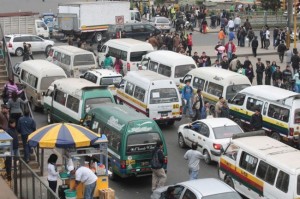By Diego M. Ortiz
Peru This Week

Lima is a beautiful city, there’s no denying that fact. It’s got a vibrant day-to-day life comparable to any metropolitan capital in the world. From the hills of Cieneguilla to beaches of Costa Verde, the people of Lima, if nothing else, are on the move. But there’s a price to be paid for that mobility.
According to the World Meteorological Organization, the city of Lima has the most polluted air in all of South America.
Experts say the principal culprit for this are the taxis, private cars, buses and trucks that are used to transport the city’s nine million inhabitants.
The 2011 study known as Lima Cómo Vamos, revealed that the environmental pollution has become the second most important issue, coming only behind safety. It’s clear that environmental issues are becoming more prevalent to Limeños.
What solutions can we as residents of this lovely city conceive?
Are there quick fixes to Lima’s environmental problems? Let’s start by looking at the situation in the city in order to see exactly what needs to be done.
Metropolitan Lima’s air pollution levels are nearly three times that of what’s recommended by the World Health Organization. Approximately 14 tons per square kilometer of atmospheric dust are sent into the air every month for everyone to inhale. The highest levels recommended by the World Health Organization are 5.2 tons per square kilometers per month.
In some parts of the city, like in San Juan de Lurigancho, those figures can reach as high as eight times the recommended levels.
According to a study conducted last year, Peru is fourth among countries in Latin America and the Caribbean in clean energy investment. Brazil, Nicaragua, and Panama have invested more heavily into clean energy projects and financing low carbon businesses; and in managing levels of greenhouse gases.
The effects of the high level of air pollution along with a lack of government oversight and private sector investment can lead to catastrophic results.
One of the ways we start to feel the effects of contaminated air is in our health.
It’s been proven that air pollution has a major impact on the respiratory and cardiovascular systems. More information is being revealed about the effects of contaminated air on your skin.
According to Dr. Lucía Bobbio Fujichima, Chief of the Dermatology department at Hospital 2 de Mayo, reduced elasticity and premature aging are among the side effects for over exposure to contaminated air. She says that in cities like Lima, you should clean your skin thoroughly every night to eliminate the particles that accumulate throughout the day. Every morning you should protect your skin by applying sun block that acts to repel UV rays and to protect your skin from harmful contaminants.
None of us want to get old before our time, so let’s get down to business and find some solutions.
Since the majority of the contamination in Lima comes from worn-out taxis, buses, and cars, the city should invest more in keeping old cars off the road. Many of the outdated cars around the city would not pass inspections in most developed countries around the world.
The fact is that the state is too lenient when it comes to inspecting those cars and would rather turn a blind eye. Even if half of the mini-buses that daily spew black clouds of smoke from their exhaust pipe were to be brought up to code, the air quality would improve.
Experts say cars are the culprits, so let’s change the way we move around the city. Bicycles are an alternative that has been adopted in cities around the world. Some progress has been made in the more affluent neighborhoods of San Isidro and Miraflores, where bicycle lanes have been constructed, though they are mainly for exercise purpose and not transportation.
The city has already invested millions of dollars into the Metropolitan bus system. If they take a step forward and combine the bus line with a bicycle share program, there would be an immediate improvement in air quality plus, the residual side effect of healthier citizens.
It all starts with educating the public about the effects of air pollution.




